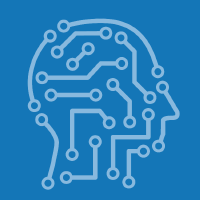Topic Menu
► Topic MenuTopic Editors


Data Analytics and Machine Learning in Artificial Emotional Intelligence
Topic Information
Dear Colleagues,
Computers using Artificial Emotional Intelligence (AEI) technologies are able to determine the user’s emotional state and can react in a proper way. Such systems allow a naturalistic communication between humans and machines. Nowadays AUI technologies are based on methods from Data Analytics and Machine Learning - in particular learning in deep artificial neural networks from multimodal data, including the videos of facial expressions, pose and gesture, voice, bio-physiological data (such as eye movement, ECG, respiration, EEG, FMRT, EMG, eye tracking). The aim of this interdisciplinary topic is to discuss the effectiveness of machine learning and data analytics methods is this special field of multimodal data processing.
We welcome Manuscripts to this interdisciplinary topic from the following fields (but not limited to them)
- Facial expression analysis
- Classification of emotional gestures and poses
- Speech based emotion
- Biophysiological sensors in emotion recognition
- Neural patterns of emotions in EEG and FMRT
- Multimodal analysis and classification of emotions
- Sentiment classification of texts
- Sensor systems for emotion classification
- Emotions in human computer interaction for healthcare and well-being
- Emotion based human computer interaction
Prof. Dr. Friedhelm Schwenker
Prof. Dr. Mariofanna Milanova
Topic Editors
Keywords
- affective computing
- affective databases
- affective interaction
- affective medicine
- data analytics
- deep neural networks
- emotion recognition
- feature extraction
- human computer interaction
- intelligent systems
- machine learning
- multimodal data fusion
- sensor systems
- sentiment analysis
- signal processing
Participating Journals
| Journal Name | Impact Factor | CiteScore | Launched Year | First Decision (median) | APC |
|---|---|---|---|---|---|

Applied System Innovation
|
3.8 | 4.9 | 2018 | 24.7 Days | CHF 1400 |

Sensors
|
3.9 | 6.8 | 2001 | 17 Days | CHF 2600 |

Algorithms
|
2.3 | 3.7 | 2008 | 15 Days | CHF 1600 |

AI
|
- | - | 2020 | 20.8 Days | CHF 1600 |

Journal of Sensor and Actuator Networks
|
3.5 | 7.6 | 2012 | 20.4 Days | CHF 2000 |

MDPI Topics is cooperating with Preprints.org and has built a direct connection between MDPI journals and Preprints.org. Authors are encouraged to enjoy the benefits by posting a preprint at Preprints.org prior to publication:
- Immediately share your ideas ahead of publication and establish your research priority;
- Protect your idea from being stolen with this time-stamped preprint article;
- Enhance the exposure and impact of your research;
- Receive feedback from your peers in advance;
- Have it indexed in Web of Science (Preprint Citation Index), Google Scholar, Crossref, SHARE, PrePubMed, Scilit and Europe PMC.

